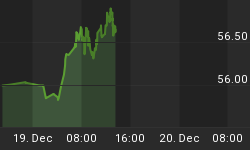A line-up of developments recently indicating that the mortal enemy of cryptocurrency—financial institutions whose very existence digital currency challenges—is coyly working up the nerve to date the bad boy of the asset world. When the two get together, though, what exactly will happen.
It’s an important question posed recently by Michael J. Casey, the chairman of the advisory board of CoinDesk, who noted the irony of this eventuality: “The institutions are coming for your crypto”.
Casey, who is also senior advisor for blockchain research at MIT’s Digital Currency Initiative, says that “for a time at least, there will be an awkward and increasingly intensified clash of cultures between the pinstripes of Wall Street and the hodlers of crypto land”.
An institutional courting of crypto might drive up crypto prices “at some point”, but Casey warns that the clash of cultures “portends more uncertainty and volatility for at least a while longer”.
Exactly what are those recently institutional developments that’s got Casey concerned—even if delightfully?
One of the biggest movements on this stage came earlier this month, when Fidelity Investments announced the creation of “Fidelity Digital Assets” to offer custody services to institutional investors, alongside a crypto platform and crypto advising. What it means for crypto is “institutional-grade custody”.
That’s a pretty big jump into the deep end with crypto for a major financial institution—and the world’s sixth-biggest fund manager.
At the same time, as Casey points out, this should be an uncomfortable relationship for crypto. While it’s the very thing that will make crypto ‘real’, it’s also the very thing that betrays its original reason for existence.
In other words, it’s the hijacking of crypto, with an element of Stockholm Syndrome involved.
But Fidelity’s move doesn’t exactly portend an instant institutional rush into crypto—especially without clear compliance procedures (anti-money laundering, AML, and know-your-customer, KYC) in place for the crypto world.
A statement cited by Pensions & Investment perhaps best sums up the why there isn’t going to be an institutional run on crypto just yet. Chris Hehmeyer, CEO of Chicago-based crypto trading desk Hehmeyer Trading and Investments, told a Futures Industry Association conference earlier this month that one of his institutional clients had noting that he didn’t mind investing in bitcoin, but he didn’t want to lose the money.
This is where the big “custodians” come into the picture. Someone has to take the risk of holding these assets, and wallets or centralized crypto exchanges aren’t enough to allay fears.
Casey notes that even ICE (the Intercontinental Exchange and the owner of the NYSE) is preparing to launch a bitcoin futures trading service called Bakkt. And it will have custodial services because it will engaging in physical delivery.
In fact, ICE has announced that it might tentatively start trading daily bitcoin futures on December 12th, pairing with the US dollar on Bakkt and stored its Digital Asset Warehouse. It’s still waiting on final approval from the Commodity Futures Trade Commission (CFTC). Related: Bentley May Launch Electric Model
This would be another big development for the cryptoworld because it would be the first physically delivered daily futures contracts on bitcoin traded with the dollar.
This is yet another phase in the crypto cycle, according to Casey, who says ICOs (initial coin offerings) have lost a bit of their zealotry, helped along by SEC arguments that most of them were violating securities rules.
The ICO is now in the process of being toned down, cleaned up and given a dose of conformity. What may take its place, according to Casey, is the STO—a “crypto-based version of more traditional assets such as bonds or equity”.
The thing is, by toning it all down it’s being stripped of its original intent, which Casey describes as “democratizing finance”.
That is the trade-off for a potential rise in crypto prices.
By Michael Kern for Safehaven.com
More Top Reads From Safehaven.com:
















